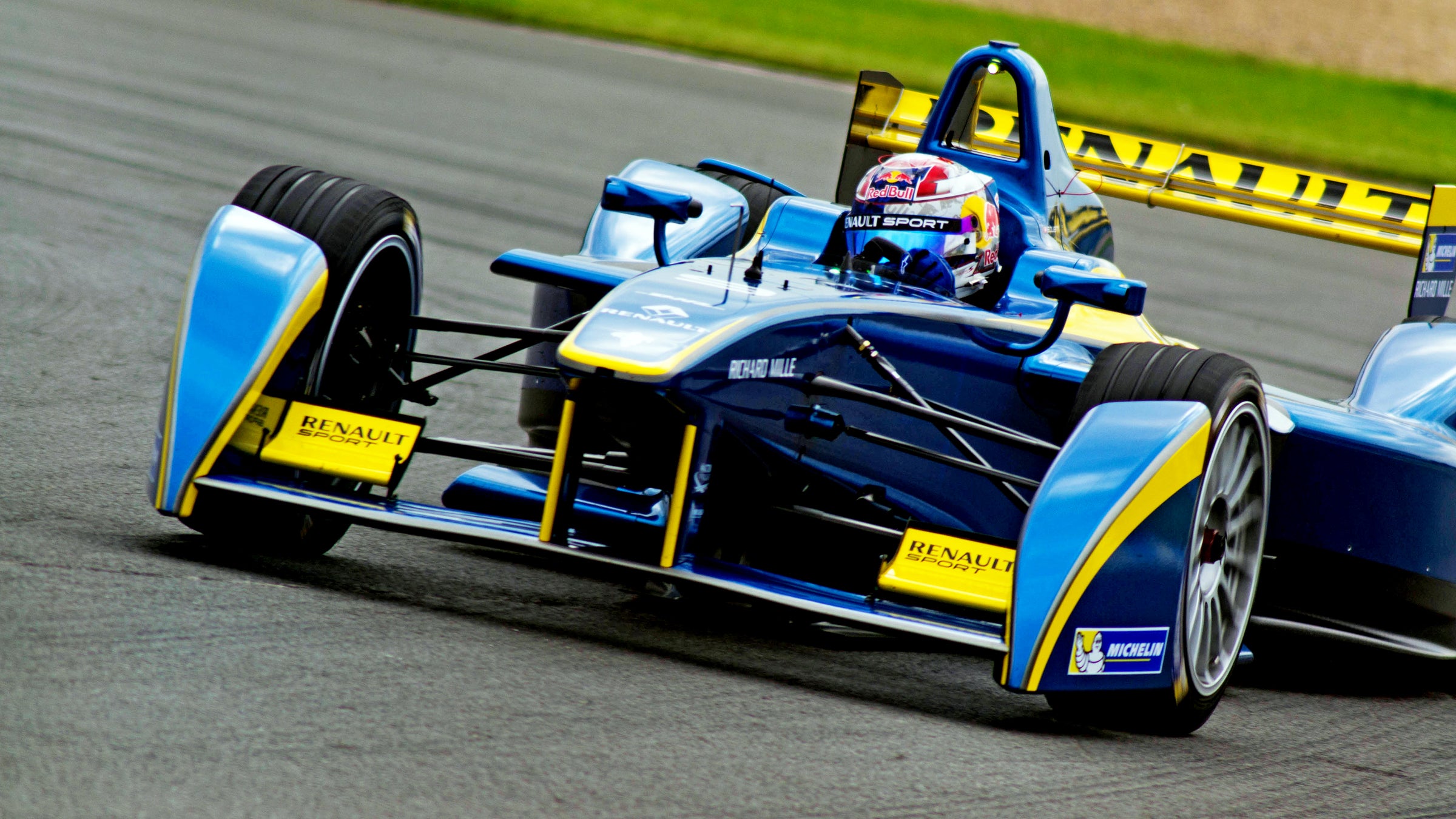The first-ever electric motor racing circuit kicked off with a low-decibel hum at China’s Beijing ePrix on Saturday.
that the inaugural race in the coed 10-stop , so named for its battery-powered vehicles, involved 20 cars making 25 two-mile laps through Beijing’s Olympic Park. Audi Sport ABT team driver Lucas di Grassi won the race after an injury-free crash took out his main competitor.
Battery-powered engines change the way drivers compete and the way audiences experience races.
Where tire changes monopolize pit stops in Formula One racing, with the average car burning through 52 tires each weekend, special Michelin tires on the electric Spark-Ranualt SRT_01E cars used by all Formula E drivers last for the entire race. The new mechanical issue is the 800-pound battery, which has only enough power for 20- to 30-minute hard sprints. Instead of changing tires, Formula E racers entirely change cars midrace and heavily monitor energy use throughout the competition.
Maxing out at 150 miles per hour, the McLaren-designed engines’ top speeds don’t compare to the 200-plus reached by Formula One engines, which also accelerate twice as fast. However, battery-powered engines produce zero emissions and almost as little noise—the electric engines emit 80-decibel buzzing, about .��
Formula E events seek to engage spectators during races with a gimmick called FanBoost, which allows them to vote for their favorite drivers. The three top vote-getters receive an extra burst of energy to use at some point during a race.
Fédération Internationale de l’Automobile, the governing body behind Formula One, has invested $100 million in Formula E to build interest in both racing and consumer-grade electric car development. As mentions, all Formula E teams use cars built to the exact same factory specifications to make sure innovation starts with electrical engine and battery adjustments.
Race host countries like China are excited about the opportunity to promote electric cars for environmental reasons. The Times mentions that Chinese officials hope the “cool factor” of sleek e-vehicles will help them get 5 million consumer-grade electric cars on the ground by 2020.


